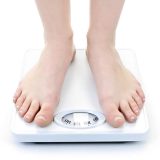A potentially lethal consequence of cardiovascular disease, a stroke occurs when a blood vessel carrying oxygen and nutrients to the brain is either blocked by a clot or bursts. The area of the brain deprived of blood suffocates from the resulting lack of oxygen and begins to die. By making a concerted effort to maintain heart and blood vessel health, individuals can reduce their risk of suffering a stroke.
An extremely complex organ, the brain controls various body functions. A stroke can impair the bodily function controlled by the affected area of the brain. However, if a large enough region of the brain is deprived of oxygen, it can be fatal. As the number three cause of death in the United States, stroke prevention is a vital component of aging healthfully.
Stroke Prevention Tips
The usual lifestyle modifications that promote general health also serve to maintain the cardiovascular system, which will invariably help prevent a stroke. However, three of the most effective approaches to make certain your brain gets a steady supply of oxygen, include:
- Avoiding Tobacco Smoke — Smoking is a major cause of heart disease and the single most preventable cause of death in the United States. The chemicals in tobacco smoke increase the buildup of plaque in artery walls and promote the development of blood clots that can cause strokes. Whether due to a blocked artery or bleeding in the area between the brain and the thin tissues that cover the brain, those who smoke have more than twice the risk of stroke compared to non-smokers. Constant secondhand smoke exposure also increases these risks, even for non-smokers. Women smokers who use birth control pills have a higher risk of heart attack and stroke than non-smokers who use them.
- Getting Active — The human body was made to move. Supporting this common knowledge, researchers have realized that heart disease is almost twice more likely to develop in inactive people than in those who are more active. Living a sedentary lifestyle can lead to high blood cholesterol levels, high blood pressure and diabetes – all of which compound the risk for stroke. The American Heart Association recommends accumulating at least 30 minutes of physical activity on most or all days of the week.
- Skipping Fast Food – We know that foods high in saturated fat, loaded with calories and devoid of fiber negatively affect cardiovascular health by clogging the arteries. However, this danger appears to be specific to those who frequent fast food restaurants. Research presented at the 2009 American Stroke Association’s International Stroke Conference found a concrete link between those who live near fast food restaurants and who have a higher stroke risk. Their findings demonstrated that residents of neighborhoods with the highest number of fast food restaurants had a 13 percent higher risk of experiencing a stroke than those in neighborhoods with the fewest such restaurants.
Modern medicine has many pharmaceutical aids to help prevent stroke. Religiously taking these drugs is necessary for many to control their blood pressure, normalize blood sugar levels and reduce high cholesterol. Although lifestyle choices do not replace prescribed medications, the contrary is also true. When it comes to stroke prevention, pills are not a substitute for healthy lifestyle choices.
Some assume that only fanatics engage in healthful lifestyle habits. However, there is nothing fanatical about wanting to live. Combining a physician’s advice with healthful lifestyle choices is the best way to make it into old age with your brain’s function intact. Quitting a smoking habit, avoiding secondhand smoke, making sure you fit half an hour of physical activity into each day and opting for healthy nourishment over a fast food burger, are all proven ways to support your cardiovascular system and – ultimately – help prevent a catastrophic stroke.




